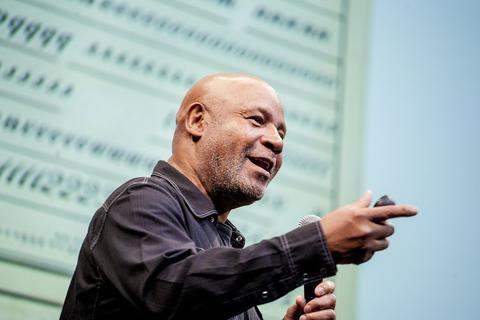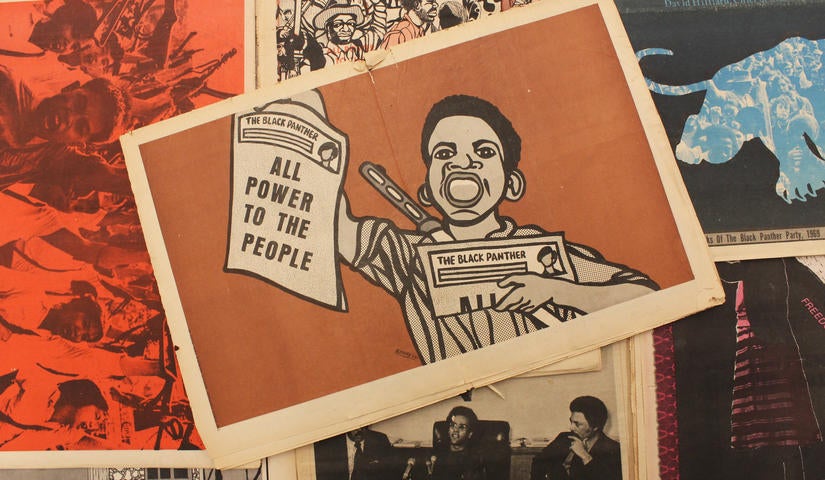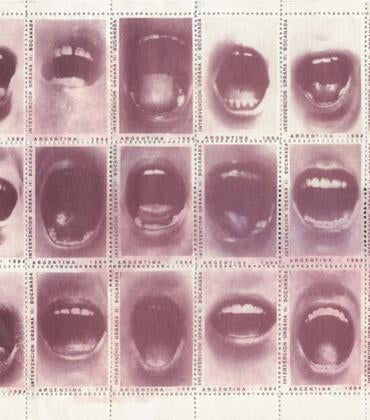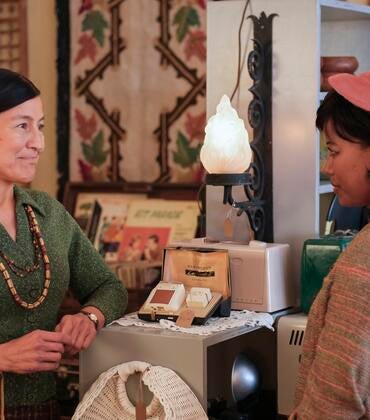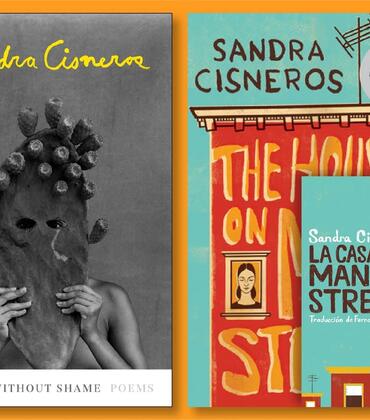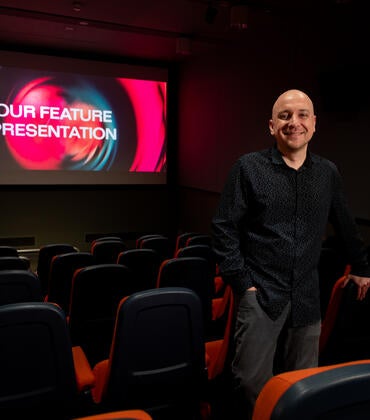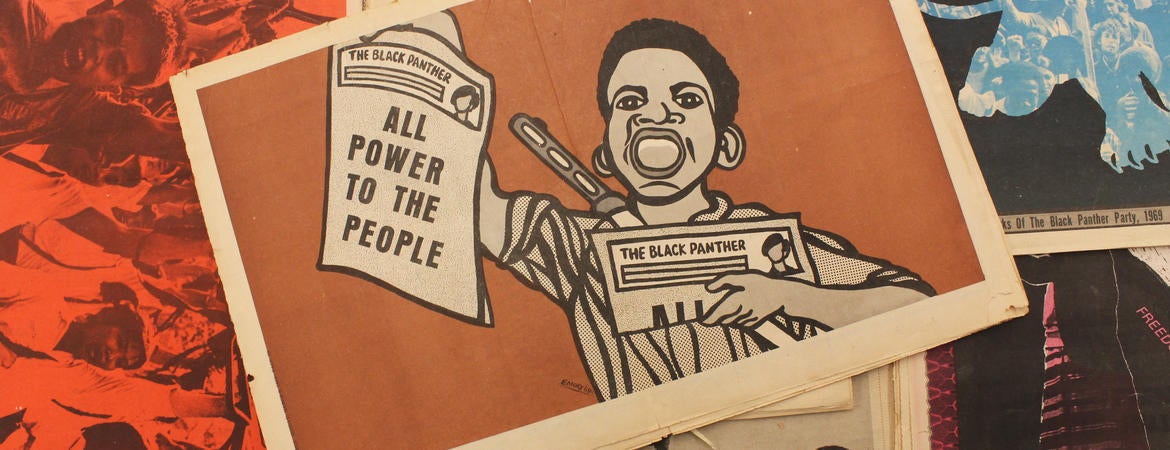
Although the Black Panther Party dissolved nearly 40 years ago, the movement’s legacy endures — largely through the iconic imagery created by former party member Emory Douglas.
As the minister of culture for the Black Panther Party and graphic artist for the organization’s newspaper, Douglas was charged with establishing the party’s visual identity. “Emory Douglas: Bold Visual Language,” on view at the Culver Center of the Arts at UCR ARTS April 27-July 14, examines the lasting impact of Douglas’ work and how it continues to inform art and activism today.
Born in Grand Rapids, Michigan, in 1943, Douglas was incarcerated as a teen at the Youth Training School in Ontario, California, where he spent time in the facility’s print shop, later going on to study graphic design at San Francisco City College. There he developed an interest in the Black Arts Movement and political activism. He joined the Black Panther Party in 1967 and revamped its newspaper while incorporating his now iconic graphic imagery. Douglas’s images, like that of Black Panther Party founder Huey P. Newton with his signature beret and large gun against a red star, blanketed neighborhoods during the 12-year span of the paper’s publication. At its peak, the newspaper had a circulation over 300,000.
Characterized by bold lines, vibrant colors, and often incorporating photographic collage, Douglas illustrated images of police brutality and economic and racial discrimination with an urgency that inspired disenfranchised black communities to rally for social justice.
“His work used very simple graphics, bold colors, and witty symbolism to impart the Black Panthers’ messages,” said John Jennings, a graphic artist and professor of media and cultural studies at UC Riverside. “He utilized the tools that he had at hand to get these ideas across: composition, color, texture, text — all of these elements were employed to put this work out powerfully and quickly. His work unified the Black Panthers’ identity in a visual form and helped solidify the visual language of a movement.”
“Emory Douglas: Bold Visual Language” features historical issues of the Black Panther Party newspaper from the Southern California Library as well as contemporary work and collaborations. Re-mixed images presented in the exhibition by Douglas and artists Patrick Martinez, Juan Capistrán, and Caleb Duarte in collaboration with Zapatista Women’s Embroidery Collectives in Chiapas, México, are a testament to the lasting impact of Douglas’ work and continued influence on current social movements.
“Emory Douglas’ work taught us how to fight with our art,” Jennings said. “His manifesto on art and the methods by which he made work gave a roadmap by which to fight oppression via visual art. Anyone who makes protest art to this day owes him a huge debt.”
Douglas’s art gave a voice to the black community at a time of great racial injustice, and with economic, education, and housing inequality still prevalent in underserved communities, it remains as relevant as it was then, explained Sheila Bergman, executive director of UCR ARTS.
“I hope that ‘Bold Visual Language’ will give young people an understanding of the relationship between politics and art, and that visual culture can be a force for social change,” Bergman said.
The relevance of his art today is also not lost on Douglas himself:
“Even though we may plot for progress, in many ways there is still structural racism and institutional racism that exists today,” Douglas said in a 2016 interview with the New York Times. “That’s what I try to continue to do with the art itself is try to make a contribution to those issues. Fifty years later though, it makes me think that the struggle continues.”
“Emory Douglas: Bold Visual Language” was originally organized by LACE (Los Angeles Contemporary Exhibitions) and is co-curated by Essence Harden and Daniela Lieja Quintanar.
